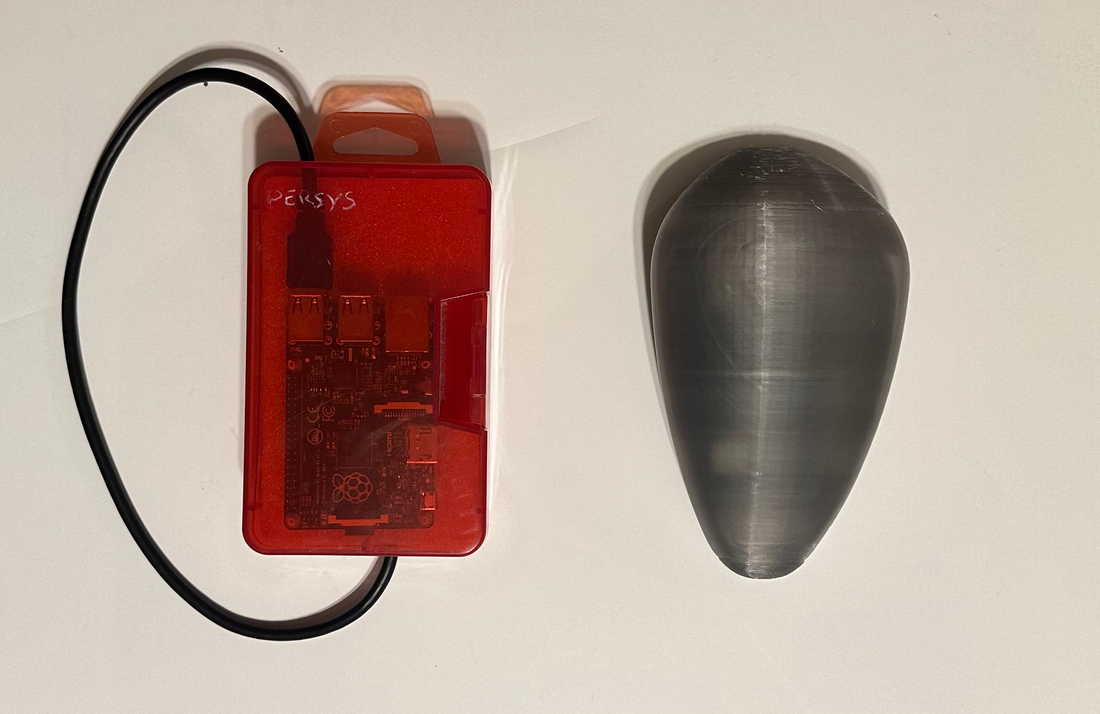
PERSYS History
Share
I've been working on PERSYS for exactly 10 years now. The project started in my sophomore year of college as a way to store pictures from my digital camera, course work, miscellaneous documents and also as a little web server to test stuff out on. All in small external hard drive/compute module I can access through WiFi/Bluetooth.

PERSYS MK I (2014) and one of the early prints for PERSYS MK II (2024).
MK I ran on a Raspberry Pi connected to an external SSD. I had a lot of plans for it and I could already see it becoming the version it is today. Large Language Models (LLMs) however were not really a thing back then so I knew I was limited with the AI tech that was available at the time. I tried running Wolfram Alpha, Wit.ai and several other technologies (via API at the time) but apart from that stack being a cool personal project with limited abilities, I didn't see it becoming a commercial product (yet). It was just too early for the vision I had. I had no doubt the industry would get there eventually though, I did my part in trying to push the industry in the direction everyone knew was the way to go.
A year after MK I was hanging from my dorm bedroom wall, I started a data aggregation company to solve the data problem for AI, announcing publicly in 2016 that the mission for my company was to make data available to everyone and eventually to train models. I focused on scientific data that was not available on the Web but sitting in scientific research lab computers all over the world.

Showcasing plans for gathering data and training/releasing models in 2016.
Fast forward to 2022-2024, LLMs are even better than I ever envisioned and I got right into it playing around with all the various flavors made available through chat interfaces and APIs from commercial companies. PERSYS MK I at this point was still kicking, serving as a dashboard server connected to a TV in my office. I thought to myself "this is exactly what PERSYS needed to work". What stopped me for a couple of years was the fact that these models were still only accessible through APIs and I wanted an on-device LLM. PERSYS needed to work 100% offline.
Then came llama and ollama. As soon as I read those releases, I jumped on the opportunity to test is out. What's even better? Raspberry Pi released the Raspberry Pi 5 with 8GB of memory and - relative to previous models - a blazing fast CPU. All the stars aligned and I got to putting all the stuff together to bring PERSYS MK II to life.
Between my data aggregation company and now, I ventured in hardware design and manufacturing, starting a furniture company. One of the most creatives parts of my life, I designed, made and shipped furniture all over the North America and Europe.

My first hardware product, an induction based grill made out of wood and ceramic.
The last piece of furniture I made was a totally new design I called The Pod. Although I love all my designs equally, the pod was an extremely inspired design/concept I wanted to introduce to the world. It was a wall mounted piece of furniture you can use as a standing desk, nightstand or bar.

I decided I'm going to use this geometry for PERSYS. After countless hours on Fusion 360, I finally arrived at a design that brought out a certain aesthetic to PERSYS. The side profile of PERSYS is the shape and proportions of the pod I made. Just like the pod, it needed to be wall mountable or simply laid on a desk/shelf. The translucent aesthetic is also present in the Web interface for PERSYS.

This is just the beginning, look out for future releases, upgrades and a soon to come PERSYS XL; with GPUs for faster embeddings and longer chat contexts.
---
Thank you for reading.
- A

